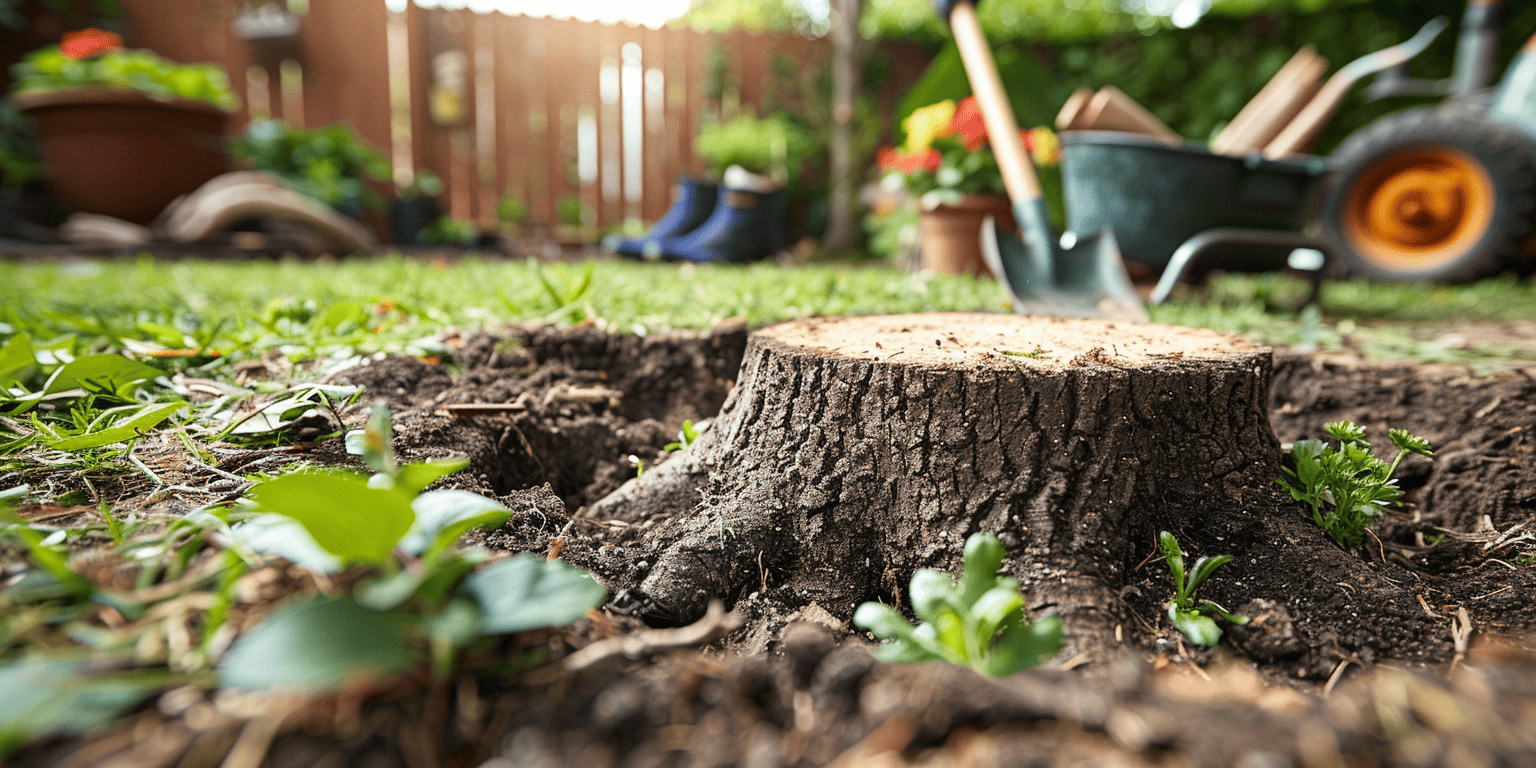Tree stump removal is a common issue faced by many homeowners. Are you tired of that unsightly stump in your yard? You’re not alone. Stumps can disrupt the aesthetics of your garden, become hazardous, and may even attract pests. Whether you’ve recently felled a tree and are left with the stump, or you’ve been ignoring an old one for some time, this guide will help you remove it step by step.
Preparing Your Stump Removal Site

Before you start removing a stump, it’s essential to prepare the site. Clear away any brush, vines, or plants around the stump. This will give you good access to it. Be mindful not to damage any underground pipes or wires. You can use a shovel to gently dig around the stump to see how deep the roots go. This will inform whether you can pull out the stump by hand or if you’ll need to apply chemicals.
Gathering the Right Tools
Removing a stump requires some elbow grease and the right tools. Here’s what you’ll need:
- Chainsaw – To cut the stump close to the ground
- Shovel – To dig around the stump and expose large roots
- Ax – To chop smaller roots around the stump
- Pickaxe – To pry up stubborn roots
- Pry bar – To leverage the stump out of the ground
- Rope – To attach to the stump so a vehicle can pull it out
- Vehicle – Only necessary if the stump is quite large
Fun Fact: An average-sized stump weighs about 400 pounds!
The Removal Process
Begin by cutting the stump as close to the ground as possible using a chainsaw. Trim away any remaining branches or small roots with an ax or saw.
Start digging around the stump with a shovel once it’s flush with the dirt. Remove about 1-2 feet of dirt to expose the widest roots. Use the ax or pickaxe to chop these large roots away from the stump.
Smaller hair-like roots will still be connected underground. Use the pickaxe or pry bar to pop those up. Keep digging and hacking at roots until the stump starts to loosen.
Pro Tip: Pour a little gasoline or kerosene on the stump as you dig. This kills pests and facilitates cutting roots!
When you’re ready, attach a robust rope to the stump. Connect the other end to a vehicle (or have some friends help pull). Tug and wiggle the stump until it gives way. If it still won’t budge, keep chopping at roots with the ax or pry bar. Add more muscle power, pulling with ropes or vehicles. Be patient, this can take 30 minutes up to 2 hours for a challenging stump!
Once removed, use a shovel to fill in the hole and pat the dirt flat. Scatter some grass seeds or plant flowers in the fresh soil. Now you have a stump-free yard!
Why Should You Remove a Stump?
Removing old stumps is crucial. They can grow new trees, attract pests like ants and beetles, or spread plant diseases.
Clearing stumps creates room for new plants and safeguards your lawn for kids and pets. Plus, it looks much nicer!
We hope this guide gives you the confidence to tackle tree stump removal on your own. Got any questions? We’re here to help!
Chemical Stump Removal
If your stump is too big to be pulled out, you may need to resort to chemicals. Chemicals help break down the wood so it rots away faster, making it easier to break apart and remove. There are natural chemicals made from tree bark or man-made chemicals you can buy. Consult someone at a garden store to pick the right chemicals for your stump.
Here are some steps when using chemicals:
- Drill holes angled down into the stump so the chemicals soak deep inside
- Fill the holes with chemical powder or liquid
- Cover the stump with a tarp or plastic sheet so rain does not wash away the chemicals
- Wait at least 6 weeks for the chemicals to work
Once the stump wood gets soft and rotten, you can break it up with an ax, saw, or digger. Then you can pull out the pieces by hand or machine. Finally, use a rake and shovel to take out any last wood chips or roots from the hole.
In conclusion, whether you decide to manually remove your stump or use chemicals, it’s all about reclaiming your yard and opening up space for new growth. It’s not just about the grind; it’s about the future of your green space. With a little patience and the right tools, you’ll have a stump-free yard in no time!


